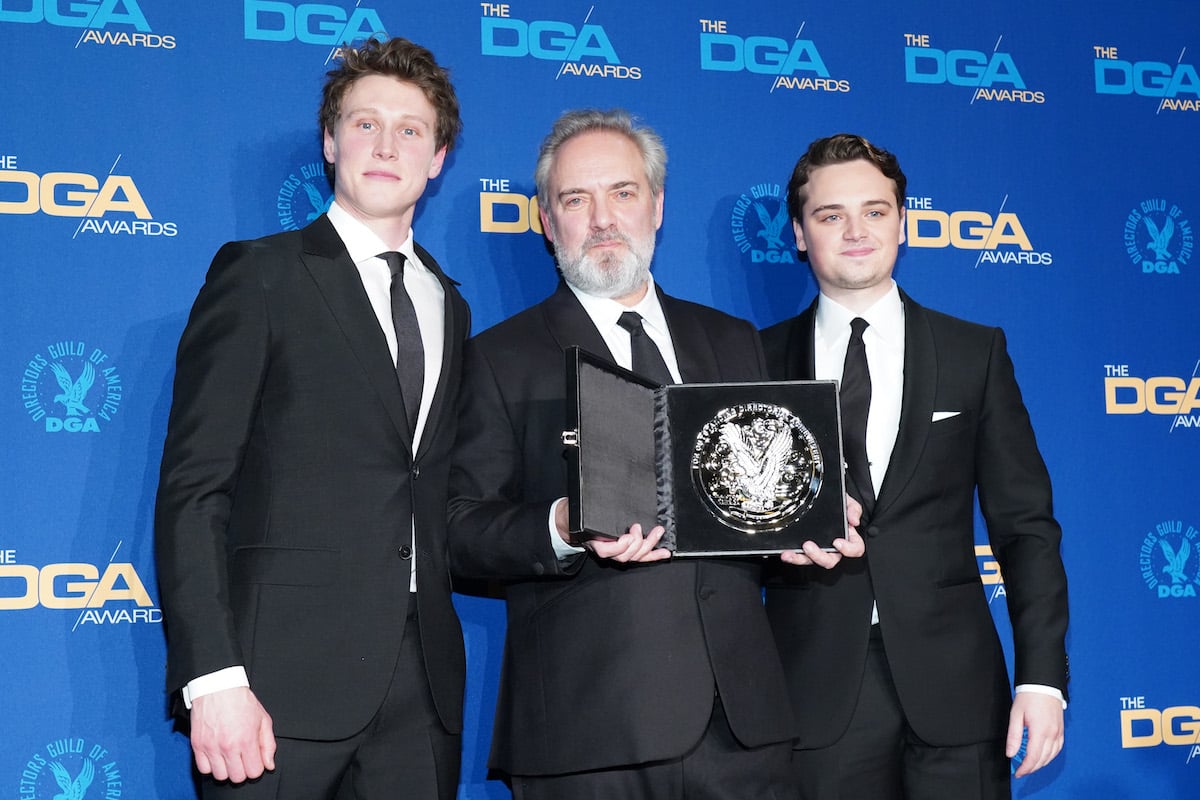‘1917’: Sam Mendes Kept 2 of George MacKay’s Bloopers in the Thrilling Final Scene
During the epic final scene of 1917, actor George MacKay swerved through 500 extras. He unsuccessfully avoided a collision. The final scenes in arguably one of the best World War I movies took multiple hours to set up. And despite trying to dodge extras, MacKay crashed into them twice.
In the thrilling final scenes of 1917, MacKay’s character, Lance Corporal Schofield, runs across a battlefield to rescue lives. What audiences didn’t know was MacKay’s two collisions were accidental, The New York Times reported. And director Sam Mendes decided to keep them.
Recap of ‘1917’

The movie 1917 features dramatic World War I battles. It tells the story of the war through feel-good episodes and scenes.
Director Sam Mendes based the film on memories from his grandfather, a messenger on the Western Front. The story follows British soldiers — Lance Corporal Schofield Lance Corporal Blake — played by actors George MacKay and Dean-Charles Chapman.
Schofield and Blake, along with 1,600 British soldiers, are stuck in the trenches. But they’re on a mission to deliver a message from General Erinmore to Colonel Mackenzie. The journey involves many unforeseen dangers and bizarre adventures.
‘1917’ received 10 Oscar nominations and 2 Golden Globes
Undeniably, 1917 is among the most cinematically creative war movies on the big screen. The intelligent writing, brilliant directing, visually gripping scenes, and near-perfect encapsulation of war make this film outstanding.
The movie garnered various awards for exemplary work. It won prizes for best picture, original screenplay, director, and technical achievement.
Filming the final scene of ‘1917’
The last scenes of 1917 involved months of rehearsals and two days of shooting, The New York Times reported. The film required multiple edits to make the scene appear as though it was from a single shot. Mendes, together with the production crew, needed to do extensive pre- and post-production.
MacKay also needed extensive preparation to shoot the scene. He had to engage in sprint training to ensure he could complete the run across the battlefield.
The crew incorporated real explosions during the filming process. They had to reset the dynamite on each take. They also had to transfer cameras from a large crane to a moving car mid-shoot. And the actors had to executive intricate choreography perfectly.
In the first take, MacKay became entangled in some of the 500 extras. During the second take, two accidental collisions occurred. Ultimately, Mendes decided to include the two goofs in the final cut.
Why did the director include the 2 bloopers?
Mendes considers the final scene a huge accomplishment — something he had hoped for in the film. The final episode was a pure reflection of the whole movie.
In the final moments of 1917, Schofield shows his dedication to saving the British soldiers’ lives. Blake dies during the action, forcing Schofield to take more risks. Viewers then learn that Schofield has a wife and child, and he must protect them at all costs.
The phenomenal movie illustrates Schofield’s resolution to protect thousands of British soldiers, as well as his family. In his quest to save lives, he becomes more determined. Otherwise, Blake will have lost his life for nothing.
Viewers see Schofield swerve across the battlefield while dodging hundreds of soldiers. As they surge toward and fire at him, he collides with them twice. That doesn’t stop him. He must continue running because there’s too much at stake. Mendes decided to keep those two unscripted collisions in the film to reinforce Schofield’s determination. And it worked.
The process that went into crafting the final episode of 1917 is remarkable. It’s fascinating to see how the whole journey and Blake’s death change Schofield. And the bloopers reinforced the urgency of the main character’s seemingly impossible mission.


